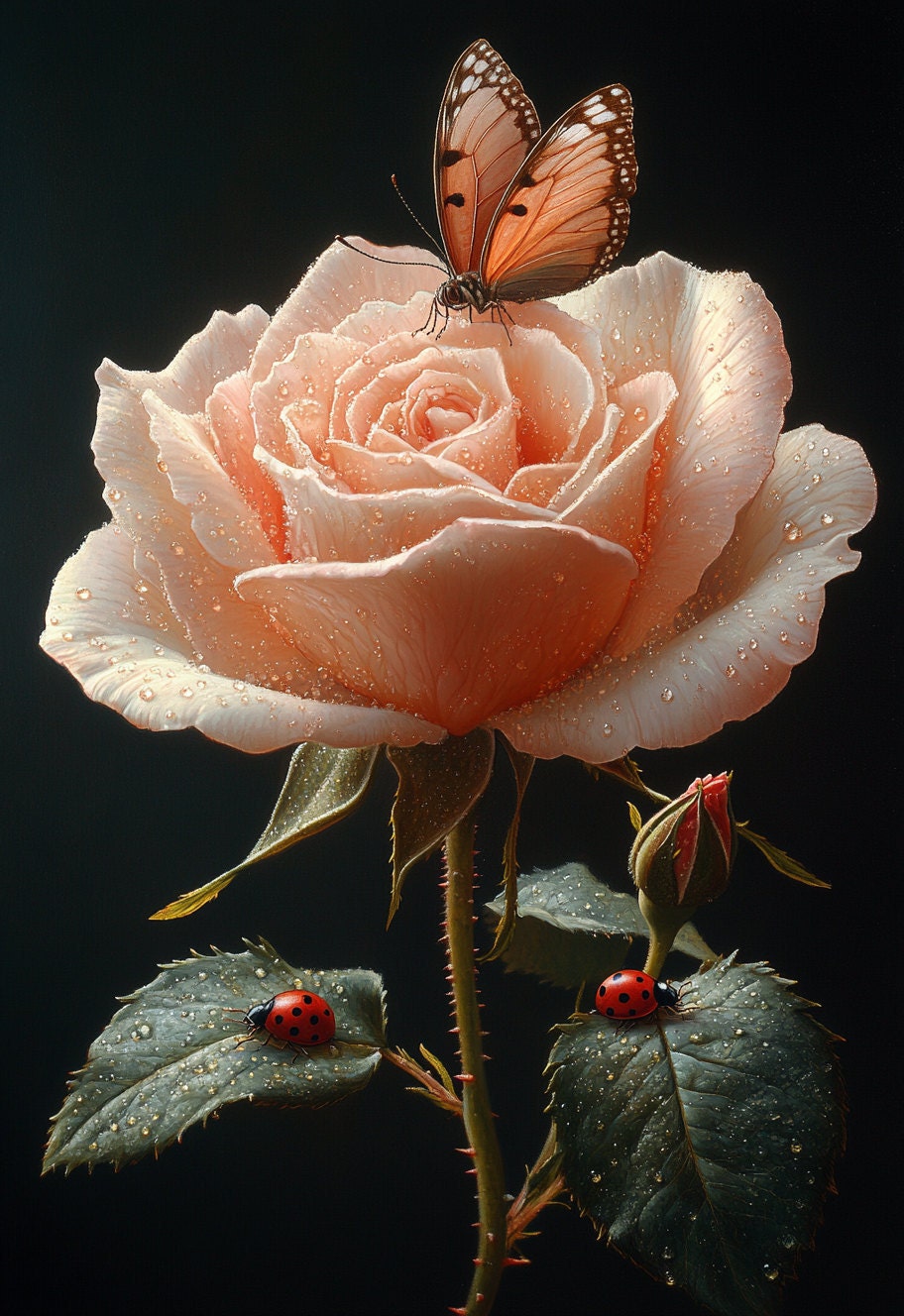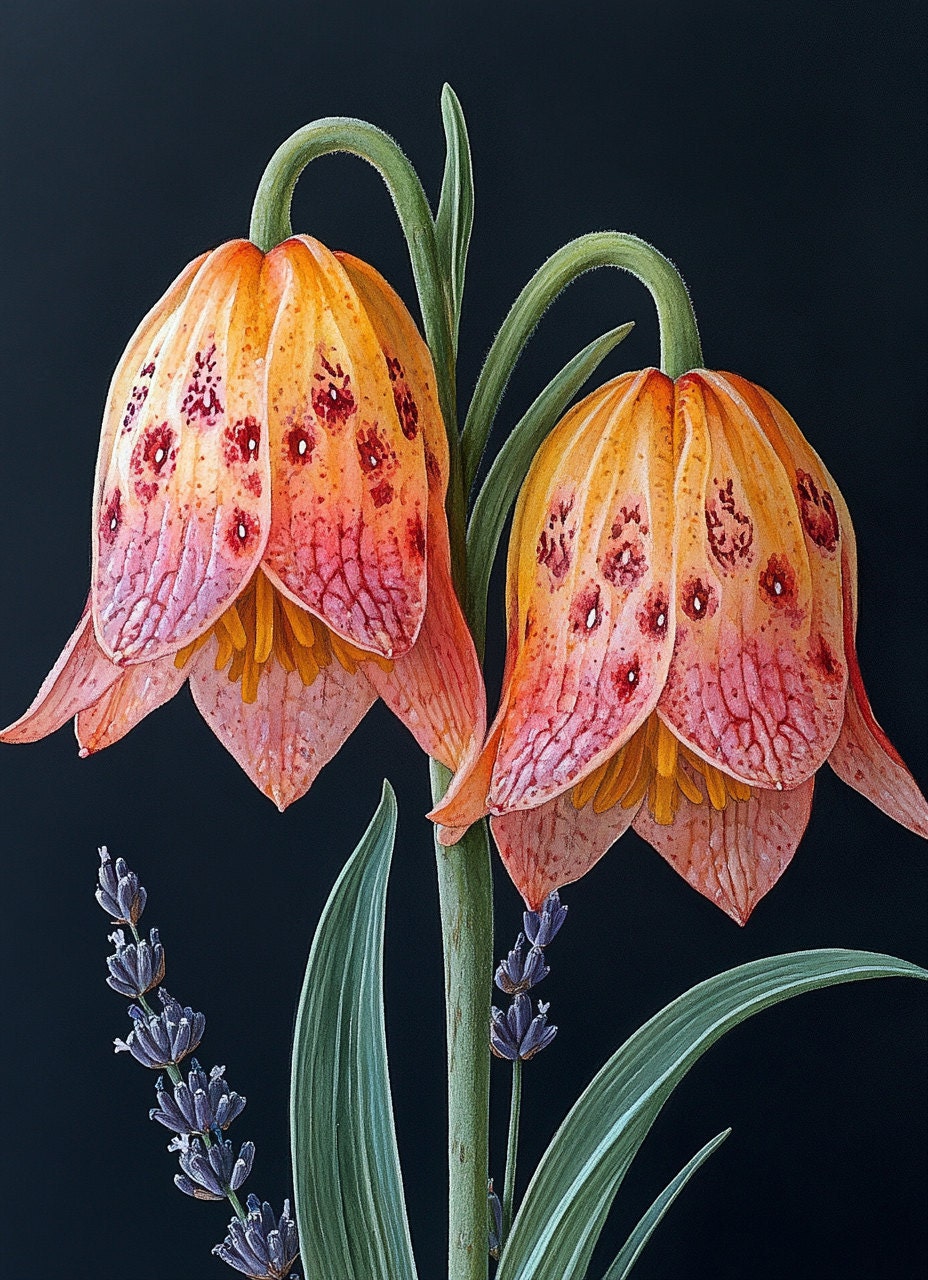In the vast history of botanical art, two names shimmer like delicate gold leaf against vellum—Barbara Regina Dietzsch and Johanna Helena Herolt. Their mastery of nature's intricate beauty shines through their artwork, which remains a testament to their brilliance. Yet, while their creations flourished in galleries and collections, their stories have often remained hidden, overshadowed by more prominent figures. In this article, we explore the lives and legacies of these two remarkable women, celebrating their contributions to art and nature.
Barbara Regina Dietzsch: A Flourishing Talent in Botanical Art
Barbara Regina Dietzsch (1706–1783) was a German artist whose botanical paintings stand as some of the finest in the genre. Born into a family of artists, Dietzsch honed her skills in her father’s atelier, where she developed a signature style blending watercolor and gold leaf on vellum. Her precision and dedication to detail, particularly in floral subjects and tiny wildlife like birds and insects, earned her recognition far beyond Germany.
Early Life and Training
Dietzsch was raised in an artistic environment, the daughter of Johann Israel Dietzsch, a prominent painter and engraver. From an early age, her talent for capturing the subtle beauty of flowers and nature’s small creatures was apparent. Her innovative use of materials, especially the combination of watercolor and gold leaf on vellum, gave her works a unique depth and luminosity, setting her apart from her contemporaries.
Technique and Style
Dietzsch’s art is characterized by its meticulous attention to botanical detail. She had an extraordinary ability to render flowers in such a way that they appeared almost three-dimensional, with each petal and leaf carefully studied. Her works often featured a dark, velvety background that made the vibrant colors of the flowers and birds stand out, creating a dramatic contrast.
Watercolor on vellum, a technique associated with high craftsmanship, was a medium favored by many botanical artists of her time. However, Dietzsch brought something new to this tradition by incorporating gold leaf, which added a radiant quality to her works. The combination of materials created an interplay of light that highlighted the textures and forms of her botanical subjects.
Recognition and Influence
Dietzsch's work was in demand throughout Europe, and she was particularly admired for her botanical illustrations. Her paintings were often transformed into engravings, which allowed her art to reach a wider audience. Much like the renowned Maria Sibylla Merian, Dietzsch came from a lineage of artists and scholars, enabling her to thrive in a male-dominated world.
Despite her acclaim, Dietzsch never married and remained dedicated to her craft throughout her life. Today, her works can be found in prestigious collections, including those of the British Museum and other notable art institutions.
Johanna Helena Herolt: A Legacy Overshadowed by Greatness
Johanna Helena Herolt (1668–1723), daughter of the famous Maria Sibylla Merian, was an artist whose remarkable talent was often eclipsed by her mother’s towering legacy. Yet, Herolt’s work, with its swirling stems and radiant hues, reveals a unique flair that deserves recognition in its own right.
A Life Shaped by Artistry
Herolt was born into a family where art and science were deeply intertwined. Her mother, Maria Sibylla Merian, was one of the most famous naturalists and illustrators of her time, and Johanna Helena grew up immersed in her mother’s world of botanical illustration and entomology. Merian's influence on her daughter was undeniable, but Herolt’s work also bears distinct hallmarks of her own style.
After her mother’s separation from Johann Andreas Graff, Herolt and Merian moved to the Netherlands, where they continued their artistic and scientific pursuits. The pair worked closely together, often co-signing works, and Herolt’s paintings were frequently mistaken for her mother’s due to their similar style and subject matter.
Herolt’s Artistic Style
Herolt’s paintings are characterized by their dynamic compositions. Unlike the more formal, static arrangements of many botanical artists, Herolt preferred to depict plants in motion, with stems twirling and leaves fluttering as if caught in a gentle breeze. Her use of vivid colors and bold contrasts gives her work an energy that distinguishes it from that of her contemporaries.
She had a particular affinity for insects, likely influenced by her mother’s fascination with the metamorphosis of butterflies. Herolt’s detailed depictions of caterpillars, beetles, and butterflies in various stages of life add a unique dimension to her botanical art, bridging the gap between illustration and natural science.
Overshadowed Yet Unforgettable
Despite her talent, Johanna Helena Herolt’s work was often overshadowed by her mother’s. This has led to many of her pieces being incorrectly attributed to Merian. However, modern scholarship has begun to unravel these misattributions, recognizing Herolt as a significant artist in her own right.
Herolt’s work reflects a deep understanding of the natural world and a talent for bringing it to life on paper. Her paintings, like her mother’s, are a celebration of nature’s complexity and beauty, but with a distinct personal touch that sets her apart.
The Legacy of Dietzsch and Herolt in Botanical Art
Though their lives and careers were different, both Barbara Regina Dietzsch and Johanna Helena Herolt contributed immensely to the world of botanical art. They worked at a time when female artists were often relegated to the sidelines, but their talent and dedication allowed them to make their mark in a field dominated by men.
Celebrating Female Botanical Artists
Dietzsch and Herolt were part of a broader tradition of women who used their artistic skills to explore and document the natural world. Like Merian before them, they demonstrated that botanical illustration was not just a scientific pursuit but also an art form capable of profound beauty.
Their works serve as reminders that nature’s smallest details—its flowers, insects, and birds—are worthy of celebration. Through their eyes, we are invited to see the world in all its intricate glory.
Influence on Future Generations
The art of Dietzsch and Herolt has inspired countless artists and naturalists, and their influence can be seen in the continued popularity of botanical illustration today. As we become more aware of the contributions of women in art history, their names have come to the fore, reminding us of the rich legacy they left behind.
Modern botanical artists often look to figures like Dietzsch and Herolt as pioneers who combined scientific observation with artistic expression, paving the way for future generations to explore the beauty of the natural world through art.

Rediscovering the Brilliance of Dietzsch and Herolt
In the delicate petals and twining stems of their paintings, Barbara Regina Dietzsch and Johanna Helena Herolt left a legacy that continues to inspire. Their works are not just representations of nature; they are celebrations of life, color, and form. While history may have sometimes overlooked their contributions, the resurgence of interest in botanical art has brought these talented women back into the spotlight, where they belong.
Their brilliance—whether in the radiant hues of Herolt’s paintings or the gold-tinged blooms of Dietzsch’s creations—serves as a testament to the enduring power of art to capture the beauty of the natural world.
FAQs:
1. Who was Barbara Regina Dietzsch?
Barbara Regina Dietzsch was an 18th-century German botanical artist known for her detailed floral illustrations and innovative use of watercolor and gold leaf on vellum.
2. What is Johanna Helena Herolt known for?
Johanna Helena Herolt was a botanical artist and the daughter of Maria Sibylla Merian. She is known for her dynamic compositions and detailed insect depictions, though her work was often misattributed to her mother.
3. How did Dietzsch innovate in her art?
Dietzsch pioneered the blending of watercolor with gold leaf on vellum, creating a radiant effect in her botanical illustrations that set her apart from other artists.
4. What materials did Dietzsch and Herolt use in their artwork?
Both artists worked with vellum, a fine parchment, using watercolors and occasionally gold leaf. Their meticulous technique allowed for the detailed and delicate rendering of botanical subjects.
5. Why is Johanna Helena Herolt’s work often confused with her mother’s?
Herolt often co-signed works with her mother, Maria Sibylla Merian, and their styles were similar, leading to many of her paintings being misattributed to her mother.
6. What is the significance of botanical art in the 17th and 18th centuries?
Botanical art played a crucial role in documenting plant species for scientific study while also being celebrated for its aesthetic qualities, blending art and science.
